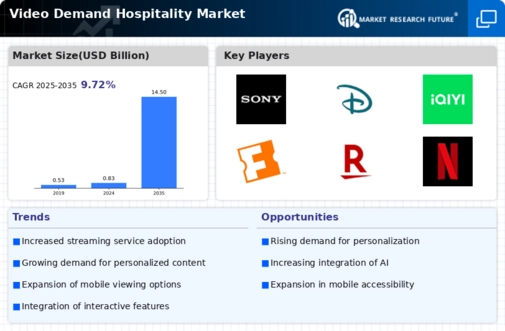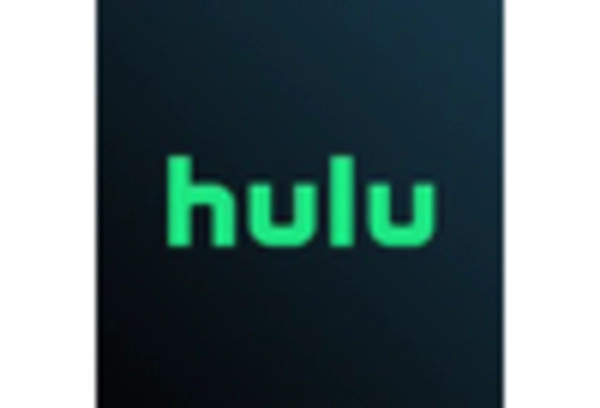Rising Demand for On-Demand Content
The Video Demand Hospitality Market experiences a notable increase in demand for on-demand content. As travelers seek personalized experiences, hotels and resorts are integrating video-on-demand services to cater to diverse preferences. According to recent data, approximately 70% of guests express a preference for on-demand video services during their stay. This trend indicates a shift in consumer behavior, where traditional cable services are being replaced by streaming options. The Video Demand Hospitality Market is thus adapting to these changing expectations, offering a variety of content that includes movies, series, and local programming. This shift not only enhances guest satisfaction but also provides hotels with an opportunity to differentiate themselves in a competitive market.
Partnerships with Streaming Services
Partnerships with streaming services are becoming a pivotal driver in the Video Demand Hospitality Market. Hotels are increasingly collaborating with popular streaming platforms to offer exclusive content to their guests. These partnerships not only enhance the entertainment options available but also attract a tech-savvy clientele. Data indicates that hotels with such partnerships experience a 30% increase in guest satisfaction ratings. By providing access to sought-after content, hospitality providers can create a more engaging environment for their guests. This trend suggests that the Video Demand Hospitality Market will continue to evolve as more establishments seek to leverage these partnerships to enhance their service offerings.
Changing Consumer Preferences for Entertainment
Changing consumer preferences are reshaping the Video Demand Hospitality Market. Today's travelers increasingly favor personalized and flexible entertainment options over traditional offerings. This shift is evident as guests seek the ability to choose from a wide range of content that aligns with their interests. Recent surveys reveal that over 75% of guests prefer hotels that provide customizable video-on-demand services. This trend compels hospitality providers to adapt their entertainment strategies, ensuring they meet the evolving demands of their clientele. As a result, the Video Demand Hospitality Market is witnessing a transformation, with an emphasis on delivering tailored content that enhances the overall guest experience.
Technological Advancements in Streaming Services
Technological advancements play a crucial role in shaping the Video Demand Hospitality Market. The proliferation of high-speed internet and the advent of smart TVs have transformed how guests consume media. Hotels are increasingly investing in advanced streaming technologies, enabling seamless access to a wide array of content. Data suggests that nearly 60% of hotels have upgraded their in-room entertainment systems to include streaming capabilities. This evolution not only enhances the guest experience but also allows hotels to offer unique content tailored to their clientele. As technology continues to evolve, the Video Demand Hospitality Market is likely to witness further innovations that enhance user engagement and satisfaction.
Increased Competition Among Hospitality Providers
The Video Demand Hospitality Market is significantly influenced by the heightened competition among hospitality providers. As more hotels and resorts recognize the importance of offering superior entertainment options, they are investing in video-on-demand services to attract guests. This competitive landscape has led to a surge in the quality and variety of content available, with many establishments partnering with popular streaming platforms. Recent statistics indicate that hotels offering enhanced video services see a 20% increase in guest retention rates. Consequently, the Video Demand Hospitality Market is evolving rapidly, with providers striving to create unique offerings that set them apart from competitors.


















Leave a Comment